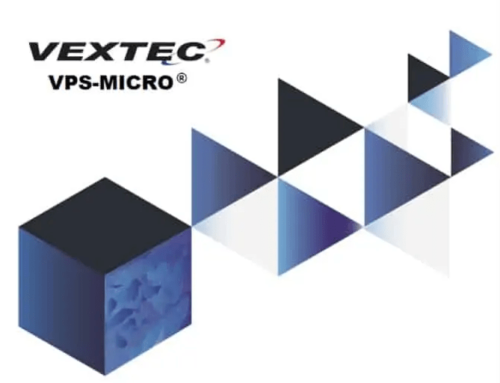The transformation of additive manufacturing (AM) from the fringe to a proven application has happened in a matter of years. Along the way, the factories deploying the method have also transformed to open up new possibilities for production. At this point, original equipment manufacturers (OEMs) and the Tier 1 and Tier 2 suppliers that serve their supply chains are using 3D printers and specialized software to develop solutions to some of their greatest challenges.
These factories are printing test specimens to explore what kinds of properties are possible and then comparing them with conventional parts to identify where new approaches may deliver unexpected improvements. OEMs also leverage additive manufacturing technologies to develop replacement parts when a machine breaks down and to improve uptimes. These and dozens of other real-world applications illustrate how additive manufacturing will transform production as we know it — a key piece of “The Fourth Industrial Revolution” already underway.
Investment in this technology will continue, and 3D printers will increasingly occupy many important roles in solving manufacturing problems. Smaller companies will likely be the most enthusiastic adopters as they look to gain market share by moving faster than their competitors. By printing near-net-shape parts, for example, these companies can achieve a level of volume control not possible through conventional manufacturing. Embracing additive manufacturing currently sets a company apart, but it won’t be long before it, too, becomes conventional.
A Closer Look at the Additive Manufacturing Process
Numerous companies employ 3D printers, but few are fully oriented around additive manufacturing. Their financials and, by extension, their operations still reflect the demands of conventional manufacturing. It is not likely that a dedicated additive manufacturing engineer is in their ranks, and the risk factors used to calculate aspects like warranty outlays are based on the performance of conventionally produced parts.
The situation will change as additive manufacturing gains momentum — particularly as the performance of 3D-printed parts improves — but it’s worth asking why OEMs still treat additive manufacturing applications as supplemental instead of as the centerpiece of the production process.
This happens for a couple of reasons:
• Scalability: Printing a thousand or more parts per day requires the careful provisioning of time, hard-to-source raw materials, and limited space inside 3D printers. Matching existing production quotas doesn’t happen quickly when it’s possible at all. AM can be too expensive in dollars and time compared with bulk-production processes. On top of that, 3D printing at scale creates issues around consistency and quality control — especially with regard to metal fatigue failure. Even if these parts meet internal standards, customers may be unwilling to accept them because of their relative unpredictability.
• Certification: There still aren’t good standards for certifying the quality of these parts, which is an obstacle for industries such as medical or aerospace that have exacting standards. Regardless of the quality of 3D-printed parts, there’s no way for customers to choose these parts confidently without a way to verify that quality. That becomes even more difficult if a part requires post-build treatments (e.g., surface finish, heat treating), which means work outside the printer is needed — and the risk of inconsistency heightens.
VEXTEC’s expertise in computational modeling and simulation provides virtual testing data to supplement AM certification protocols. This virtual certification capability can increase confidence in understanding the actual performance of AM parts in the field. Read more about our applications in AM in our Case Studies page.
For these reasons above, conventional manufacturing doesn’t seamlessly translate into an additive equivalent. Fortunately, that was never the intent. Additive manufacturing isn’t a complete replacement for conventional manufacturing — at least not anytime soon. Rather, it’s a way to address intractable problems in manufacturing, like when the U.S. Air Force replaced a support strap prone to failure with a 3D-printed alternative it could rush into production.
For noncritical parts with minor engineering requirements (e.g., brackets, hatch doors) additive manufacturing is a high-speed, low-cost means of production. The same goes for the tooling components that commonly need replacement on critical machines. Printing them eliminates the need to warehouse thousands of machine parts or contend with extended downtime because of a part’s unavailability — or when the production line itself is down and in need of a long-lead or unsourced part. For a small batch of custom-built parts, whether for an old aircraft or an orthopedic patient, it makes more sense to produce them through additive manufacturing rather than conventional methods.
That being said, manufacturers should never assume that additive manufacturing guarantees an immediate or extensive return on investment (ROI). Each business will have varying points at which additive manufacturing processes become profitable for them — and different applications where it makes sense to deploy 3D printers. To have the most significant impact, business leaders should leverage additive manufacturing strategically instead of attempting to wedge it into existing operations.
As additive manufacturing technologies improve, there will be more opportunities to produce additional complex parts at greater scale with sophisticated finishes printed on. For manufacturers across the board, it’s a question of how — not if — they will use additive manufacturing.
Exploring Business Opportunities in Additive Manufacturing
As an emerging technology that some — but not all manufacturers — use, additive manufacturing provides a key competitive differentiator. It empowers manufacturers with distinct capabilities and a “cutting edge” reputation that can pay dividends, attract investors, and drum up attention during a product launch. The financial benefits of additive manufacturing are available to a larger number of manufacturers, too. In the span of just a few years, the number of materials able to be 3D-printed has doubled to including several types of metal; it’s also now possible to print with multiple materials.
This technology provides no shortage of disruptive potential for innovative manufacturers, though that capability comes with pros and cons. If additive manufacturing reduces the amount of subtractive manufacturing (where parts are “cut out”) necessary, it also reduces material costs and — potentially — the number of different materials necessary. These could lead to significant savings, offsetting the cost of additive manufacturing technologies and maintenance.
The initial machine costs constitute as much as 74% of the total cost of 3D printing a product, and since these are sensitive and mission-critical machines, they require a serious investment in maintenance. They also drastically reduce tooling costs and potentially shorten downtimes, which highlights the financial calculus that goes into exploring business opportunities in additive manufacturing.
As part of that calculus, it’s critical to consider the full spectrum of additive manufacturing technologies, including — but not limited to — 3D printers. Software matters just as much as hardware, and the former can help manufacturers design and build parts in ways that lower costs, raise output, and make it easier to recoup the initial investment in machines in less time.
Software can also help product designers predict how products will perform so they can quickly abandon anything that doesn’t meet standards for considerations like strength or fatigue. If the goal is to build things better, faster, and cheaper — and designers traditionally can only choose two of the three — the right additive manufacturing software in the right hands makes all three attainable.
Additive Manufacturing Issues to Address Early On
Manufacturers that choose to implement (or further implement) additive manufacturing must contend with several details before moving forward, including:
• Available Capital: Capital expenditures available to purchase and maintain the number of printers needed to meet production quotas. Regardless of any cost savings or production boosts these technologies might offer, the upfront investment necessary for precision metal 3D printers, in particular, is a major CAPEX that requires deliberation.
• Supply Chain: Suppliers that make metal alloy powders for 3D printing are, in general, not the suppliers that make metal ingots/billets for conventional manufacturing. Anyone diving into additive manufacturing for the first time will need to seek out new suppliers and rethink material costs in the context of everything they produce.
• Infrastructural Overhaul: The labor force may also require rethinking. As manufacturers come to rely on additive processes, they will need manufacturing engineers, operators, technicians, material and process engineers, and metallurgists familiar with those processes.
It’s easy to assume that CAPEX is the biggest obstacle to additive manufacturing, but supply chain issues and staffing shortages may ultimately prove more difficult to overcome. That’s why it’s important to address these issues early — either during or before acquiring equipment.
Putting in more work upfront pays dividends later, and it pays using today’s most valuable currency — innovation. There are countless additive manufacturing applications available; while some applications will fail, others will exceed expectations and drive value in ways no one anticipated. The manufacturers that are willing to experiment with this technology and accept any associated risk and failure will be the ones that outpace the competition, either by optimizing existing operations or by pioneering game-changing approaches.
To understand how additive manufacturing accelerates innovation in unique ways, consider a process like rapid prototyping. With this new technology, designers can print in-house prototypes instead of outsourcing the work and awaiting the results. That way, designers know almost immediately whether they have a great design, a work in progress, or an eternally flawed concept. The layer-by-layer nature of additive manufacturing encourages out-of-the-box thinking, and building parts from the ground up eliminates the 3D geometrical constraints of machine and casting.
For designers, this creates new opportunities and hurdles. In both cases, however, designers must adopt a completely new way of thinking than the staples of conventional manufacturing. Exciting ideas are bound to emerge.
Getting Started With Additive Manufacturing Applications
Manufacturers eager to embrace additive manufacturing should proceed with cautious optimism. It bears repeating that the initial work done to plan and prepare for the arrival of these technologies has the biggest impact on the eventual results.
Although every factory deploys 3D printers a little differently, there are best practices that apply to all of them. Here are three to prioritize:
1. Build a team. Few, if any, products will be produced entirely through additive manufacturing, and 3D-printed parts will primarily be components used in conventional manufacturing. That means additive manufacturing experts will need to work closely and collaboratively with other production specialists and not be siloed away in a corner of the factory.
Realign personnel so that the team is oriented around manufacturing processes rather than products. Map out the processes involved with creating a given product to identify which ones involve additive manufacturing. Then, build a team of additive manufacturing experts who can step in to administer 3D printers or offer design insights on multiple products. Creating opportunities for teams in conventional and additive manufacturing to cross-pollinate will further encourage innovation and excellence in this space.
2. Make certification a must-have. Questions about quality and consistency present a serious obstacle to additive manufacturing — as they should. Why embrace a technology that only produces inferior products? It’s important to recognize the areas where additive manufacturing can (and can’t) offer something superior to conventional manufacturing.
More importantly, producers must be able to prove that quality through a certification process. It benefits everyone involved to assess the quality of 3D-printed materials objectively and eliminate any concerns about performance or viability. In areas like aerospace, where additive manufacturing’s potential is only surpassed by the need for quality control, certifications will unleash a wave of adoption and new applications.
3. Try virtual prototype testing. Even though product developers have sophisticated design processes in place, bad concepts still make it out of the idea stage. That’s because it’s difficult to identify clear design flaws when something sits flat on a page. Virtual prototype testing brings it into three dimensions and allows designers to explore the product and evaluate its potential early in the process.
If a design is a dead end, it’s apparent immediately instead of months down the line. Virtual prototyping can determine whether something is viable earlier in the product lifecycle — and with far more certainty than existing methods.
A Helping Hand in Additive Manufacturing
Additive manufacturing’s impact on business is hard to overstate but difficult to describe because of how it could affect so many facets of manufacturing. Identifying where and how is up to forward-thinking manufacturers to explore. But rather than going through an exhaustive trial-and-error process to learn where additive manufacturing is best applied, let VEXTEC answer those questions.
With our virtual prototype test software, users can take design files and test whether they’re suitable for different types of additive manufacturing. That way, they don’t overlook the opportunity to leverage 3D printing — or try to force this technology on a design where it’s not appropriate. When designs are appropriate for AM, we offer meaningful virtual certification capabilities that can augment the standard physical verification and validation regimes.
Our software helps anyone excited by the potential of additive manufacturing — or eager to get the jump on competitors through early adoption — make the most of the technology while avoiding common pitfalls.
Don’t just try something new. Hit the ground running with the help of VEXTEC.





Leave A Comment